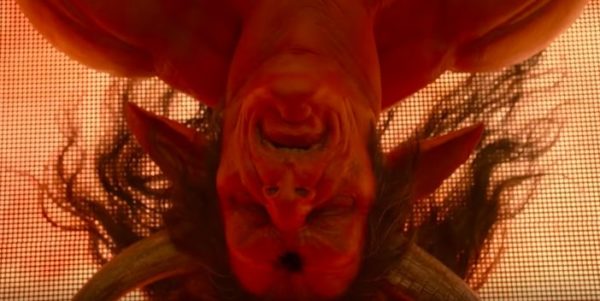In today’s so-called ‘Golden Age of Television,’ you need more than just blood, guts and sex to pull off a great TV show. The Knick, steered by director Steven Soderbergh and creators Jack Amiel & Michael Begler, stays above the fray simply as cinematic television. Despite being a period drama, it is stylish, brash and filled with the type of bravado we see on film. It’s a show helmed by people who know they’ve got something great on their hands and do their best to keep it on track.
The Knick is a circus act, literally. Set in New York in 1900, the series tells the story of The Knickerbocker, a struggling hospital that is putting more resources into treating patients who can’t pay than those who can. After the suicide of his mentor, Dr. John Thackery (Clive Owen) assumes the chief surgeon role at the hospital, a promotion that puts even more pressure on his cocaine-addicted, weary body. To make things worse, he is forced to hire Dr. Algernon Edwards (Andre Holland), a young black doctor, as his assistant chief surgeon.
Edwards has his own struggles, as he decides to begin a clinic in the Knick’s basement to treat black patients. Dr. Everett Gallinger (Eric Johnson), who was supposed to get promoted to assistant chief, is also constantly angry at Edwards and blames him for all the tragedies in his life.
Other characters include Cornelia Robertson (Juliet Rylance), whose father is the wealthy patron of the hospital; Dr. “Bertie” Chickering Jr. (Michael Angarano), a young surgeon who thinks of Thack as a god, despite his father’s misgivings; nurse Lucy Elkins (Eve Hewson), a West Virginia native who begins a dangerous relationship with Thack; and manager Herman Barrow (Jeremy Bobb), who tries to raise money for the Knick while also struggling to pay his debt to a mobster.
As the season goes on, these characters and their explosive relationships with each other reach boiling points that feel like genuine surprises to the audience and possibly even the writers themselves. Were some of the crazy surprises planned or did the writers just put the characters in holes they could not get out of? Amiel and Begler, who wrote all but two episodes, throw in external forces (like riots or illnesses) that throw these characters’ lives into disarray. It’s a kind of “controlled anarchy” and it takes a director like Soderbergh to hold it together.
It’s not just Soderbergh who brings a cinematic feel to the proceedings. Clive Owen gives a magnificent performance as Thank, urging his co-stars to keep up with them. And most of them do. Hewson, in particular, gives a star-making supporting performance and should have been nominated for an Emmy. Angarano gets one magnificent scene in the finale when he learns the truth about his idol. Holland is also fantastic, perfectly putting Edwards’ inner demons on the screen.
The Knick’s first season hits Blu-ray on Tuesday, with the 10 episodes spread over four discs. While the picture quality is quite remarkable, there’s little in the way of supplements. The “Episode Post-Ops” run under three minutes each and are often filled with clips from the episodes. There’s only three episode commentaries and none of them feature comments from Soderbergh. A documentary that goes more into the medical procedures in the series would have been appreciated.
The Knick definitely isn’t for the squeamish, but it is as engrossing as anything else on television today. Some series try to be long films, but The Knick succeeds at that. Season one is a 600-minute film that never meanders. If you haven’t watched it yet, now’s the time to start. Season two begins on Oct. 16 on Cinemax.



